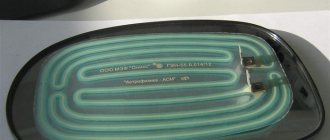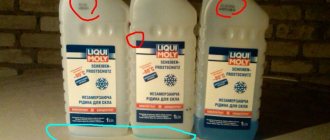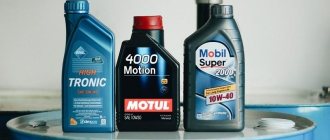The extraction and transportation of crude oil does not have the best impact on the state of nature. Because of them, the soil is degraded, the air and water bodies are polluted.
In order to reduce the harmful effects of used engine oil on the environment, it must be properly disposed of. Disposal of used oils is a rather complicated process.
Contaminated lubricant
Waste oil includes mineral water made from unprocessed oil, as well as synthetics that are contaminated with foreign particles. Over time, the oil becomes dirty, its performance decreases, therefore, further use of the lubricant is not possible. Used motor oil comes from various sources (regular drivers, car service centers, various factories and stations).
Motor oil production
According to generally accepted standards, used oil liquids include:
- Automotive oils.
- transmission lubricants poured into cars, trucks running on gasoline/diesel/gas, as well as ships and airplanes;
- brake oil products;
- hydraulic fluids.
- Industrial oils.
- for compressor, turbine, bearings;
- for hydraulics;
- emulsions for metal processing (allow cutting, grinding, processing, rolling, stamping, extinguishing and coating);
- for electrical insulation;
- for refrigeration units;
- for cables;
- thermal media.
In the Russian Federation, there is a special GOST that defines the rules for recycling used motor oil.
Sequence of the oil recycling process
Recycling of used oil occurs in several stages: receiving the oil at specialized points of environmental companies, its primary purification with preparation for disposal, and the process itself. At the same time, a significant amount of material and energy resources is saved, because the cost of recycled oil is about a third less than newly produced oil, with the same operational and consumer characteristics. The above applies to the disposal of used motor oils, the selling price of which is significantly lower. Edible oils are not recycled, since a number of carcinogenic components in food organic media cannot be neutralized during processing.
Waste oil drums
The criteria for achieving the desired result are:
Compliance with the chemical and physical parameters of the reconstituted motor oil: viscosity, acid number, flash point, presence of harmful impurities (primarily sulfur), ash content, density and other parameters that are limited by the relevant GOST;
Compliance with operational indicators, first of all, the presence of mechanical impurities in the composition, as well as the stability of oils during long-term storage in the temperature range of 20...2000C (GOST 11063);
The durability of regenerated oils, which is assessed by the so-called coke number - the percentage of residue that is formed during the thermal decomposition of oil without air access (GOST 8859).
If the recycled oil meets these standards, then recycling has been successful and the product can be reused.
If a number of indicators do not meet state standards, recycling should not be considered a failure. Simply the waste product is processed into heating oil, and can also be reused, this time at thermal power plants. Therefore, large waste oil collection points always carry out an initial assessment of the quality of the raw materials, after which they send them to their destination.
Video - installation for recycling used oil at a car depot
Some types of oil-containing media - for example, lubricant-cooling emulsions and additives for them, which are used in mechanical engineering, on CNC machines, in rolling, cold and hot stamping industries, are generally regenerated in a closed cycle. Enterprises have their own areas where the waste is delivered, where the compounds are cleaned of mechanical impurities, after which they are added to fresh oils and lubricants.
Magnetic separator for cleaning coolant from metal chips
What is not considered contaminated motor oil?
These fluids are not considered used lubricant:
- used animal/vegetable fats (classified as food waste);
- solid waste that is contaminated with waste oil liquid;
- waste from cleaning the bottom of oil tanks;
- oil recovered from the spill;
- other oil waste that was not used;
- solvents (for example, varnish gasoline, fuel additives, white spirit);
- coolant, kerosene;
- liquids that cannot be disposed of in the same way as old motor oil.
Oil purification
There are many different technologies for purifying such oil. At home, you can use only the basic ones - simple lag and filtering. This may be sufficient for household use. In total, cleaning usually takes place in three main stages:
- Settling the oil to separate the sediment. After this, it is passed through a filter.
- Getting rid of oxidation products. Various coagulating substances can be used, including starch solution, zinc chloride and others.
- Vacuum fractional distillation. It is carried out using special vacuum installations. Allows you to get rid of volatile fractions that are still in the composition.
Danger of contaminated oil fluid
Drivers should be aware that used automobile oils are considered waste with a hazard class of 2/3 (high/medium). Where to dispose of used motor oils? This issue is regulated by the Basel Convention.
Used lubricant is very dangerous for nature and humans. Its harmfulness is greater than that of untreated oil, because the oil contains various additives, polyolefins, mechanical particles, and other impurities. Used motor oil pollutes water bodies and soil and is considered a carcinogen and mutagen.
Where to dispose of used oil? How to implement it? First, the process of burning the petroleum product (a certain proportion of it) is carried out. Some of it is disposed of as toxic waste. The main part is simply poured into sewer/drainage systems and rivers.
Today it is possible to recycle motor oil. This will allow the cleaned lubricant to be used again in the engine. It’s sad, but recycling is not very common in the Russian Federation (from three to twenty percent of black motor oil is recycled).
Application and disposal
The waste remains a valuable raw material that can be processed for further use. Since this is hazardous waste, environmentalists do not recommend using it for any household needs.
It is best to hand over used oil to specialized enterprises. However, many do not accept it in small quantities from the population, so each car owner decides where to put it based on their capabilities.
Methods of application
Despite the danger of mining, it is added to bitumen or asphalt to increase plasticity and has a variety of uses in the household:
- used as an oil lubricant for hinges, locks, bicycle chains, hinges, etc.;
- cover wooden fences or the back side of floorboards to prevent the destruction of wood, protect it from pests, and extend its service life;
- used instead of anti-corrosion agents, lubricating the bottom and sills of the car, metal poles, fences, etc.;
- burned in furnaces or boilers running on waste machine oil.
On the Internet you can find information on how to assemble the stove yourself. However, it is better to purchase a factory-made device, for example one of the German brands: Kroll, Gronver or Giersch. Interestingly, manufacturers only sell them abroad. In Germany, the use of such stoves is prohibited, since combustion produces substances that pollute the environment.
Sales to specialized organizations
In small quantities, the oil is accepted by intermediaries who hand over the waste to licensed recycling and processing enterprises. They issue all the necessary documents. For individuals, the best option is to go to a service station. It is easy to hand over used oil in large quantities not only in Moscow, but also in many other cities of Russia. It is accepted, for example:
- Energosistema LLC (Moscow): from approximately 8 rubles/l, the price needs to be clarified;
- LLC “Utilitservis” (Biysk): volume from 5000 l, from 5 rub./l;
- Progress LLC (Krasnoyarsk): from 200 l, from 6000 rub./t;
- group of companies “Clean City” (Orsk): from 100 kg, from 2 rubles/kg.
Recycling companies
There are many advertisements on the Internet for licensed companies (license No. 077-103) for the processing and disposal of used oils, as this is a profitable business. Muscovites and St. Petersburg residents mainly rent them out to companies such as:
- “Ecology 24” (Moscow): price per volume from 0.4-0.5 cubic meters. m when paying in cash it is 6-8 rubles per liter, when paying by bank transfer (including VAT) - from 7 to 12 rubles per 1 liter;
- “M-OIL” (Moscow): 0.5-2 cubic meters. m - 7000 rubles per 1 cubic meter. m, over 2 cubic meters. m - price is negotiable;
- Oilmonster (St. Petersburg): accepts from 50 l to 30 t, the price needs to be clarified.
In large volumes, companies export used oils in their own tank trucks or pump them into special containers. Collection containers are provided to clients upon request. The price for 1 liter depends on the quantity: the larger the batch, the higher the price. The type, amount of impurities, physical and chemical properties (viscosity, flash point, etc.), degree of contamination, and location of the client are also important. Documents confirming correct disposal must be issued.
The process of cleaning contaminated oil fluid
How is used motor oil cleaned? There are several methods.
- Combustion without pre-treatment. When dirty grease burns, toxic substances are released. They are very dangerous for nature and people. This method is used only when the motor oil and equipment through which the petroleum product is disposed of are in accordance with all standards. It may be necessary to obtain special certificates and perform special measurements.
- Purification to obtain fuel. It consists of producing fuel with a low concentration of sediment and water. This fuel does not clog the car channels. To purify, the oil is settled and filtered. The method is not very effective; it is advisable, after using it, to clean the petroleum product with bleaching clay and distill it.
- Reconstruction at the site of application. In order to remove foreign particles, a filtration system is used (directly at the point where the lubricant is used). This method is effective for industrial enterprises that produce a lot of contaminated motor oil that needs to be disposed of somewhere.
- Cleaning at a special facility. The used lubricant is sold for the production of fuel.
- Restoration with new lubricant. There are many methods for regenerating motor oil for reuse. When using them, dirty oil liquid is treated with heat, filtered, and hydrotreated. The resulting petroleum product is almost no different from the new mineral water. It can again be implemented for lubricating car parts. Restoration increases the service life of the lubricant.
Waste oil purification scheme
Environmental hazard
Motor oil is approximately 70-80% mineral or synthetic base oils. The former are a mixture of hydrocarbon compounds obtained by distilling natural crude oil. The latter contain alcohol esters and various organic acids.
To improve lubricity at different temperatures and for other purposes, special chemical compounds are added - additives: detergents, modifiers, antioxidants, anticorrosives.
All these substances are hazardous to the environment, so used engine oil must be specially disposed of and should not be poured onto the ground or down the drain. In nature, it almost does not decompose and has a toxic effect on living organisms. Just one drop of this poisonous liquid is enough to poison 600-1000 liters of water. When it gets into bodies of water, it forms a greasy film on the surface that prevents the penetration of oxygen.
In Russia, such waste is classified as the third hazard class. In the FKKO they were assigned the code 5410020102033. Violation of the rules for waste disposal carries administrative liability. The corresponding article numbered 8.2 is contained in the Code of the Russian Federation on Administrative Offences.
What to do with contaminated oil fluid?
- Determine whether it can be recycled.
- Store it in leak-free and corrosion-free containers in a place protected from the elements.
- Clean up spilled grease immediately.
- Send your car oil for recycling.
- If you have the necessary certificates and equipment, you can process contaminated petroleum products yourself for further sale.
Regardless of who you are - an ordinary car enthusiast, a car service employee, an individual entrepreneur, you need to understand that proper processing of waste petroleum products makes it possible to protect the environment from harmful effects. Also, recycled grease can be used to make fuel/auto oil, which will be practically no worse than a completely new product, just poured into cans at the factory. This is quite beneficial from an economic point of view.
Contacting an industrial waste disposal company
Perhaps the worst way possible for a person who has used oil. There are specialized companies that deal with industrial waste disposal. They do this for money, that is, you have to pay for them to accept the oil from you. Such companies are not present in all regions, and you need to come to them yourself with the oil, then pay for disposal, and they will do everything.
Such companies exist primarily to dispose of massive industrial waste, and many of them do not even work with private individuals. Therefore, it is not recommended to even think about this option.
How to use
The idea of recycling lubricants arose about 80 years ago, but it began to be implemented much later. At first, oil was burned and heat was obtained, and then they learned how to purify it. Used oil can be recycled and reused.
Oil can be processed in the following ways:
- Clean by removing contaminants and reuse. This is done in large plants using filtration systems, settling tanks and centrifuges, often repeatedly passing the oil through purification systems.
- Regenerate, extending the shelf life of the oil. This form of processing saves energy and natural oil. After regeneration, used oil is not inferior in quality to virgin oil.
- Burn as a coolant for heating houses or powering production. This type of processing is not environmentally friendly; in Europe, the burning of waste oil is prohibited, and its regeneration is mandatory.
Different oil recycling technologies differ in the way they treat used oil, including force field cleaning and separation.








